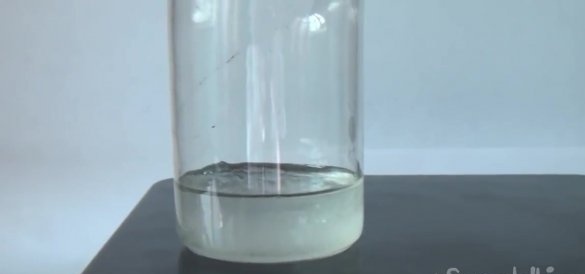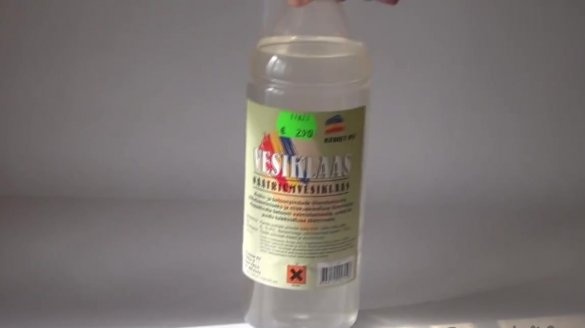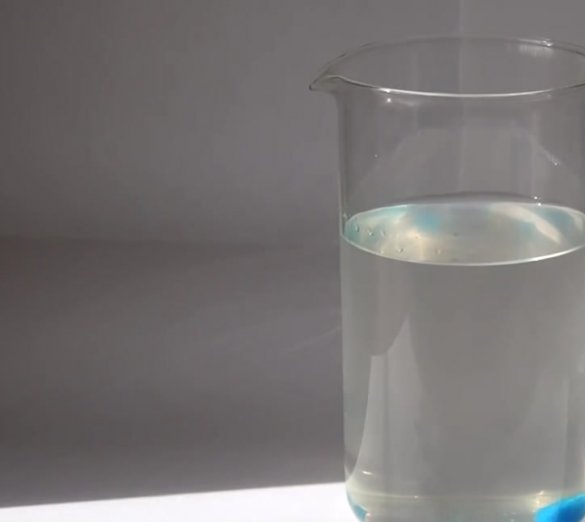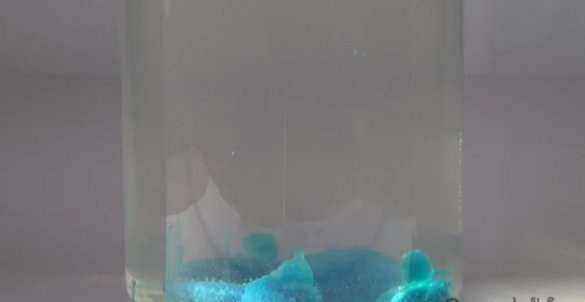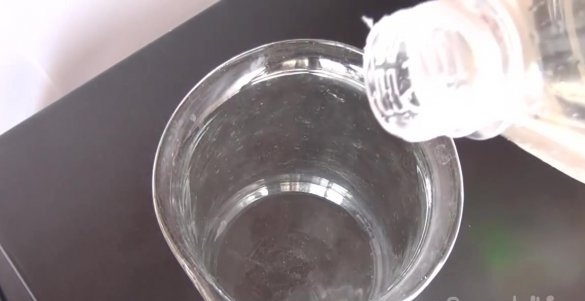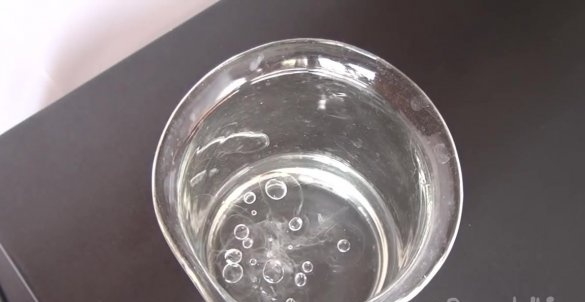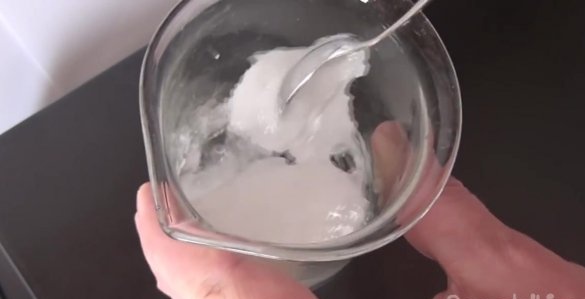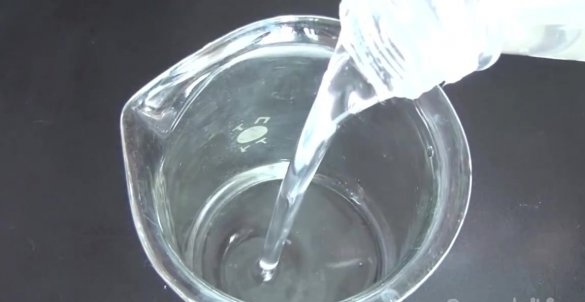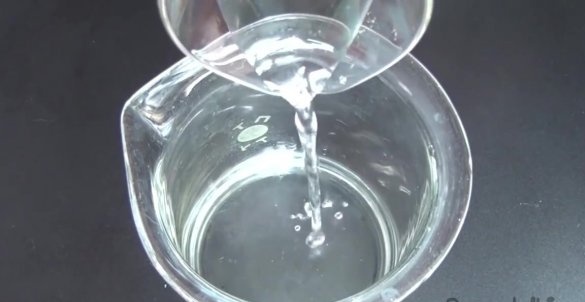This time, as a test substance for our material, we chose sodium silicate, which is sold in most hardware stores. It is also called liquid glass or silicate glue.
The process of conducting experiments you can see in the video
[media = https: //www.youtube.com/watch? v = scA1Gx8_lJw]
We will need:
- a glass;
- sodium silicate;
- acetone;
- sulfuric acid;
- water;
- copper sulfate.
Let's start the first experience. To do this, take a large glass and pour sodium silicate into it.
Next, we dilute our sodium silicate with water in a one to one ratio.
After that, at the bottom of the glass we throw a small amount of copper sulfate. We are waiting for the result.
Over time, branches of crystals begin to grow from copper sulfate. Note that the experiment will look more impressive if, in addition to copper sulfate, other non-ferrous salts of various metals are added to the glass.
Consider the processes that occur during the experiment. When copper sulfate comes in contact with sodium silicate, insoluble copper silicate is formed, which is drawn from crystals of copper sulfate.
We pass to the second experiment. Again, take a glass and pour a small amount of liquid glass.
Add a little acetone to the glass and start mixing.
When these two substances come in contact, sodium silicate polymerizes, as a result of which we learn silicate rubber.
Silicate rubber resembles rubber in properties. He is jumping and bounces well from the surface onto which he is thrown.
Finally, we move on to the third experiment, during which we obtain silicic acid. Pour a small amount of sodium silicate into a glass and add sulfuric acid.
As a result of this reaction, solid, water-insoluble silicic acid is formed.

